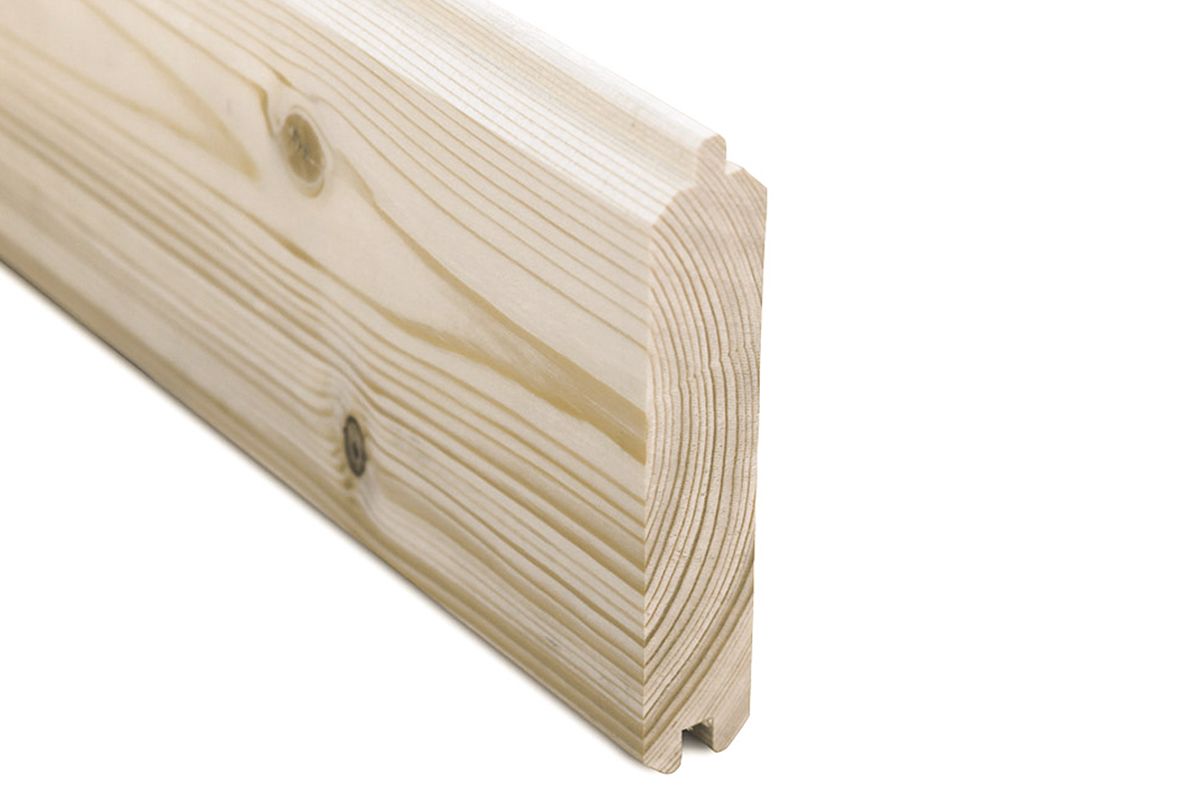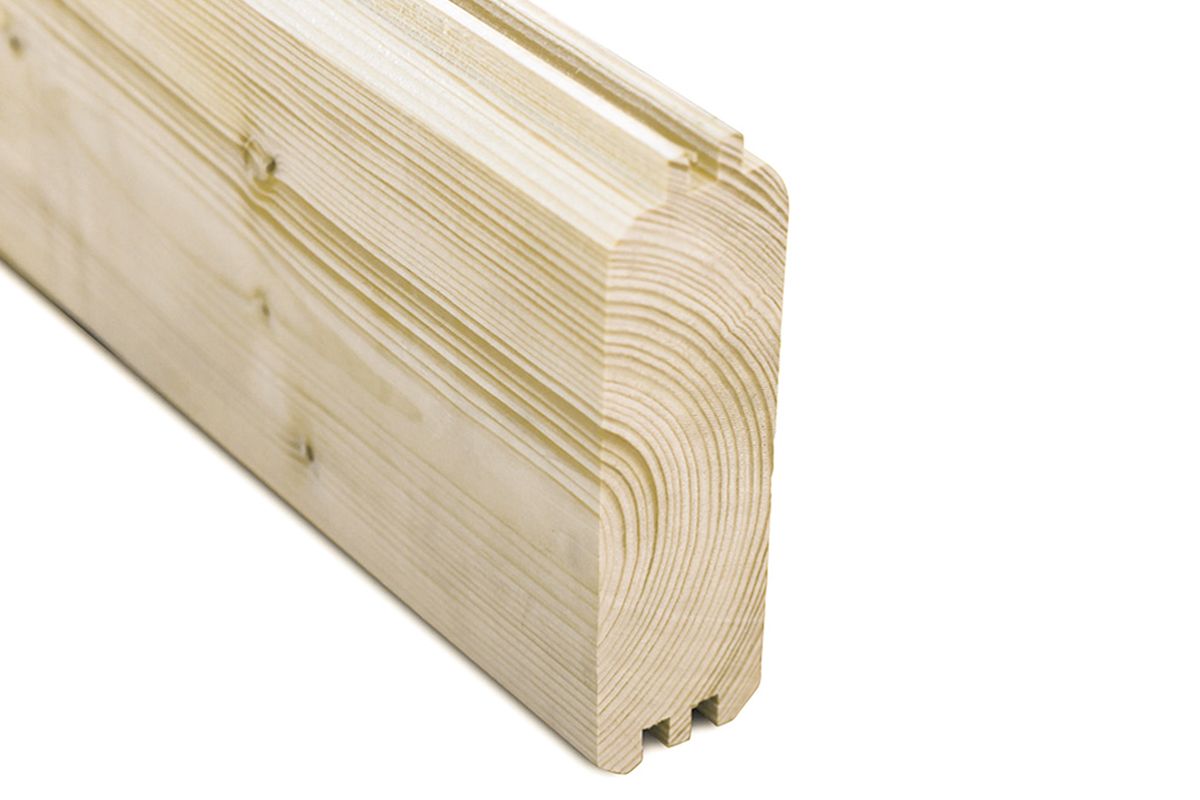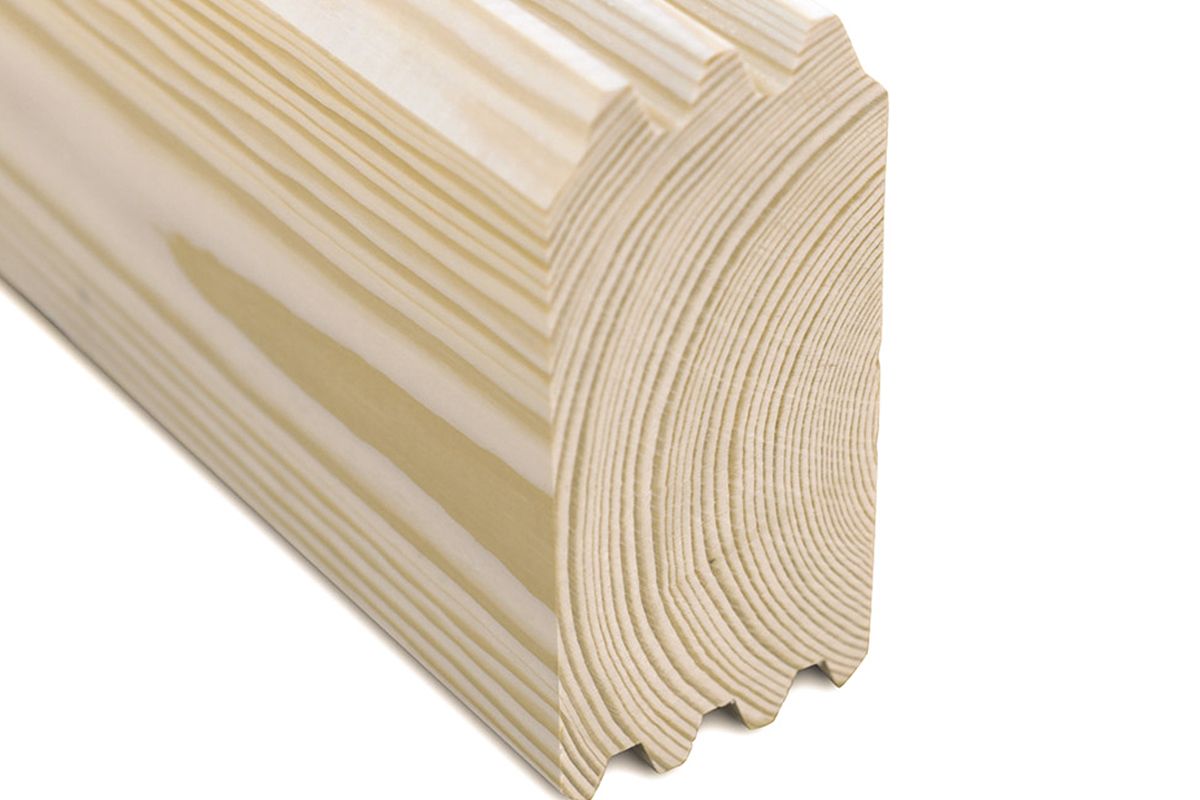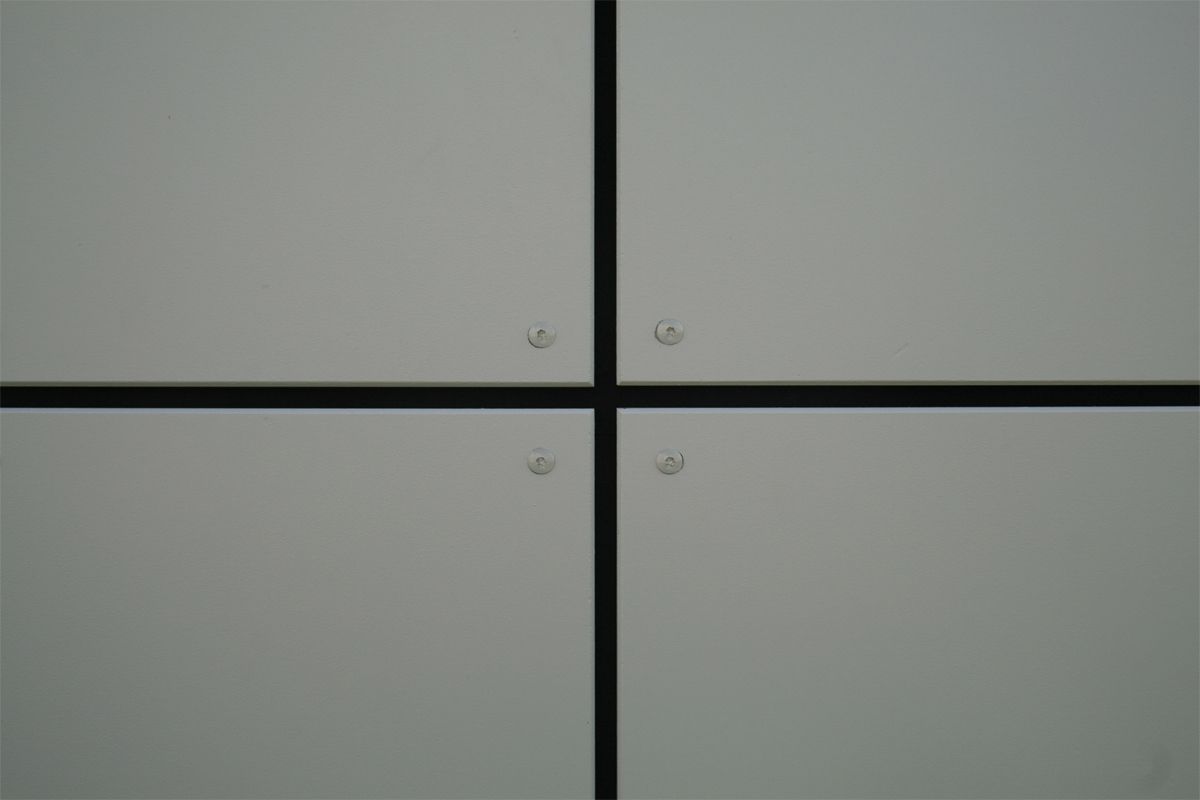Solide Werkstoffe
Für jeden Einsatz das richtige Material
Leimholz, unbehandelt
Als Leimholz oder Brettschichtholz (BSH) bezeichnet man einen aus mehreren Schichten (Lamellen) verleimten Gesamtquerschnitt.
Die einzelnen Holzteile aus unbehandelter Fichte werden getrocknet, nach Fehlern gescannt, sortiert und durch Keilzinken endlos verbunden. Mehrere Einzellamellenwerden dann wetterfest miteinander verleimt.
Die Bauteile sind tragfähig, neigen weniger zu Rissbildungen oder Verdrehen und sind sogar belastbarer als natürlich gewachsenes Holz. Unbehandeltes Fichtenholz muss im Außenbereich gegen Pilz- und Insektenbefall geschützt werden.
Belastbarer als natürlich gewachsenes Holz
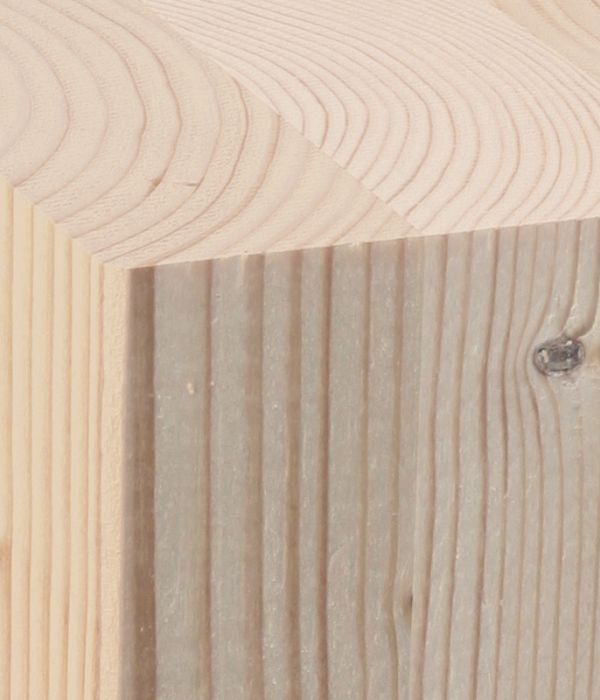
Douglasie, unbehandelt
Douglasie ist durch im Holz enthaltene Harze und Öle resistent gegen Insekten und Pilzbefall. Außerdem hat das Holz eine hohe Oberflächenhärte.
Wir verwenden nur technisch getrocknete Douglasie, die zum Teil in der Länge keilverzinkt ist.
Wird Douglasie nicht mit Lasuren behandelt, bildet sich mit der Zeit auf der Oberfläche eine silbrig-graue Patina. Diese schützt vor Umwelteinflüssen ohne aufwändige Holzpflege.
Wir verwenden nur technisch getrocknete Douglasie
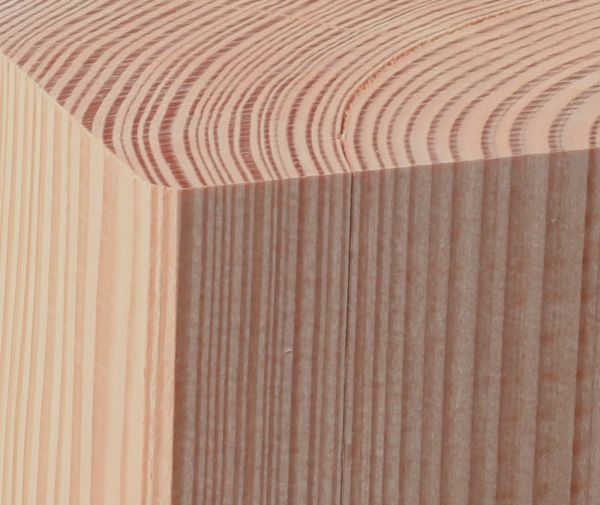
KVH, unbehandelt
Beim Konstruktionsvollholz (KVH) werden die einzelnen Holzteile getrocknet, nach Fehlern gescannt, sortiert und wetterfest durch Keilzinken miteinander verleimt.
Wir verwenden unbehandeltes Fichtenholz, das im Außenbereich gegen Pilz- und Insektenbefall geschützt werden muss.
Nur speziell zertifizierte Unternehmen dürfen Konstruktionsvollholz (KVH) produzieren.
Wir verwenden technisch getrocknetes, endlos verleimtes, massives Fichtenholz
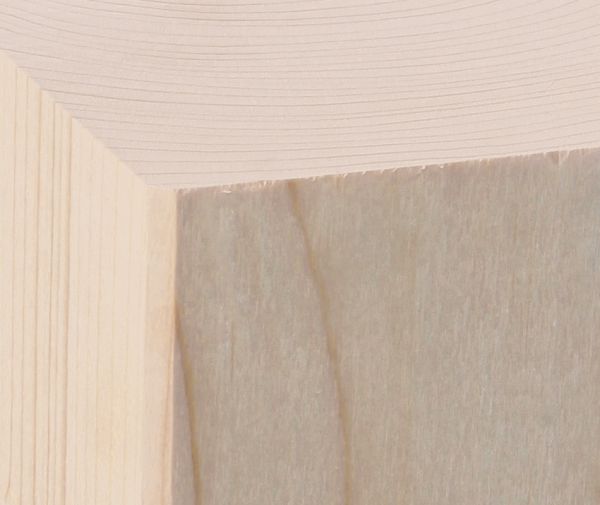
Nadelholz,
imprägniert
Fichten- und Kiefernholz wird mit in Wasser gelösten Metallsalzen ohne UV-Schutz imprägniert und erhält so eine grünliche, später gräuliche Färbung. Durch entstehende Restfeuchte kann es bei der Trocknung zu Harzaustritten, Rissbildungen oder Verdrehen kommen, was statisch unbedenklich ist.
Die Imprägnierung gegen Pilze und Insekten enthält jedoch keinen UV-Schutz, so dass die Oberfläche mit der Zeit vergraut. Zur farblichen Behandlung eignen sich aufgrund der Imprägnierung insbesondere dunklere Farbtöne.
Imprägnierung gegen Pilze und Insekten
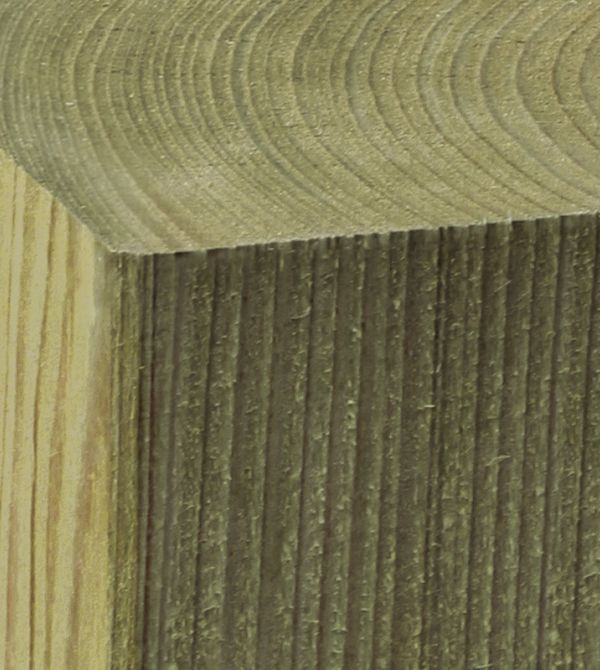
Nadelholz,
unbehandelt
Gehobeltes Nadelholz, das in seiner natürlichen Form verwendet wird und keine weitere Verarbeitung oder Zusatzstoffe enthält, wird auch als Vollholz bezeichnet. Nadelholz im Außenbereich muss gegen Pilz- und Insektenbefall geschützt werden.
Harzaustritte, Rissbildung oder Verdrehungen sind ein natürlicher Vorgang bei allen Hölzern, bei Vollholz aber stärker als bei BSH oder KVH. Statisch ist dieses unbedenklich
Holz in seiner natürlichen Form
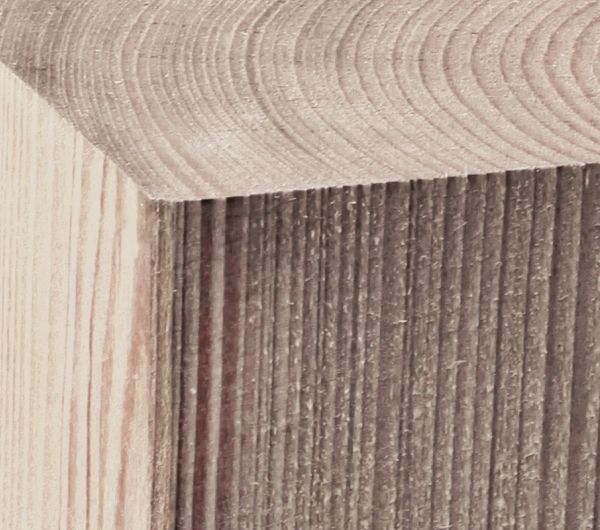
Aluminium, pulverbeschichtet
Korrosions- und extrem wetterfestes pulverbeschichtetes Aluminium vereint als Werkstoff metallische Eleganz und hohe Stabilität.
Keine Korrosion und extrem wetterfest
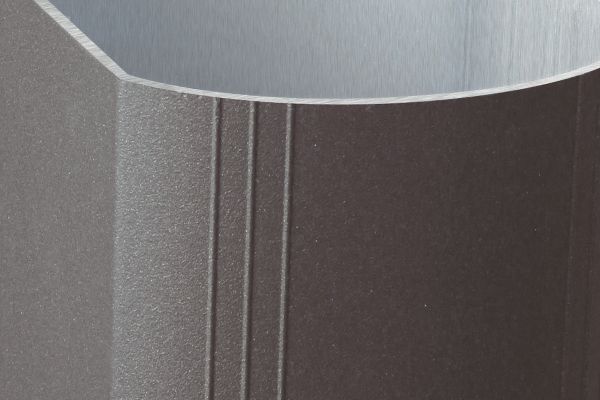
28 mm Wandbohlen
Gehobelt aus keilverzinktem Fichtenholz. Ideal für Gerätehäuser und kleinere Gartenhäuser.
Blockbohlen mit Einfachnut
45 mm Wandbohlen
Gehobelt aus keilverzinktem Fichtenholz. Hohe Stabilität für größere Gartenhäuser durch stabilere Blockbohlen und zwei Nuten und Federn.
Blockbohlen mit Doppelnut
70 mm Wandbohlen
Gehobelt aus keilverzinktem Fichtenholz. Unsere stärksten Bohlen die optimalen Einsatz bei sehr großen Garten- oder Freizeithäusern finden.
Blockbohlen mit Dreifachnut
10 mm Fassadenplatten
Zementgebundene Holzfaserplatte für Außenfassaden.
Die Platten sind auf der Außenseite farblich behandelt. Spätere Anstriche erfolgen mit handelsüblichen Fassadenfarben für den Außenbereich.
Witterungsbeständige Fassadenplatten
